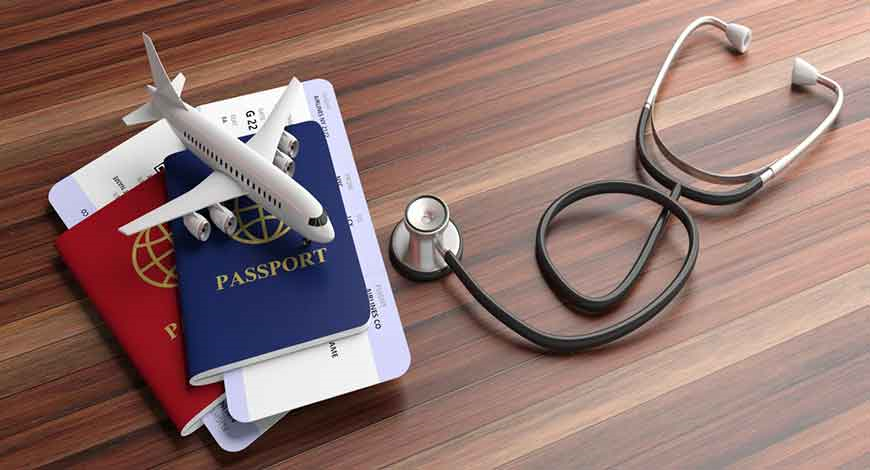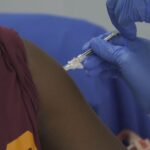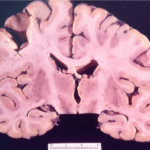South Korea is rapidly solidifying its position as a premier destination for medical tourism, witnessing an unprecedented surge in international patients seeking a wide array of treatments.
This remarkable growth is a testament to the nation’s cutting-edge medical technology, highly skilled professionals, and a burgeoning global reputation for healthcare excellence. The data paints a clear picture of this phenomenon: in the past year alone, South Korea welcomed an astounding 1.17 million foreign patients. This figure represents a nearly doubling of the 610,000 recorded in 2023, and a staggering 140% increase from the 490,000 patients who visited in 2019, before the onset of the global COVID-19 pandemic. This dramatic resurgence highlights the resilience and increasing allure of South Korea’s medical sector on the international stage.
The primary drivers of this boom have historically been patients from Japan and China, predominantly seeking dermatology and cosmetic treatments. However, recent trends indicate a significant diversification. Essential medical fields, such as internal medicine, are now experiencing substantial growth in foreign patient numbers. Medical experts are highly optimistic, predicting that the total number of foreign patients could reach an impressive 1.5 million this year.
This continued expansion is fueled by steady increases in patients from “third countries” beyond the traditional strongholds of Japan and China, along with a growing demand for services in a broader range of medical departments, moving beyond just aesthetic procedures. This comprehensive growth underscores South Korea’s evolving reputation as a multifaceted medical destination.
Illustrative Cases: Lives Transformed by Korean Healthcare
The impact of South Korea’s advanced medical capabilities is perhaps best understood through the personal stories of patients who have traveled for life-changing treatments.
A Mongolian Man’s New Lease on Life
In a compelling example of South Korea’s advanced medical interventions, a 63-year-old Mongolian man underwent a critical liver transplant procedure at the renowned Seoul Asan Medical Center in January. This patient’s journey to South Korea was necessitated by a severe medical condition. He had been diagnosed with hepatitis D in 2022, a viral infection that, left untreated or uncontrolled, can lead to chronic liver disease and ultimately liver failure. His condition deteriorated progressively, reaching a critical stage where a liver transplant became his only viable option for survival.
The challenging procedure involved receiving a portion of a healthy liver donated by his own son, a testament to familial love and the advanced surgical capabilities available in South Korea. Following the complex transplant, the patient experienced a successful recovery. This case exemplifies the high-stakes, life-saving procedures that draw patients from regions where such specialized, intricate medical care might be unavailable or less advanced. It highlights not only the surgical expertise of Korean medical teams but also the comprehensive post-operative care that contributes to positive patient outcomes.
A Russian Boy’s Fight Against Brain Cancer
Another poignant case involves a five-year-old Russian boy, who received proton therapy at the prestigious Samsung Medical Center last December. Proton therapy is a highly advanced and precise form of radiation therapy, particularly beneficial for treating cancers in sensitive areas, such as the brain, especially in pediatric patients, as it minimizes damage to surrounding healthy tissue. The young boy had been diagnosed with a malignant brain tumor, a life-threatening condition that requires aggressive and specialized treatment.
Despite having undergone radiation treatment in Russia, his condition unfortunately did not show signs of improvement. This critical situation prompted his family to seek alternative, more advanced care options abroad. Their search led them to South Korea, a destination increasingly recognized for its cutting-edge cancer therapies and state-of-the-art medical technology.
The decision to travel internationally for such a serious condition underscores the trust and confidence that foreign patients and their families place in the expertise and infrastructure of South Korean hospitals. Both the Mongolian liver transplant and the Russian proton therapy case serve as powerful examples of the critical, often last-resort, medical care that South Korea consistently provides to international patients.
Economic Impact: Soaring Revenue and Transactions
The influx of foreign patients has translated directly into significant economic gains for South Korea’s medical tourism sector.
Surging Medical Expenditures
The financial impact of the burgeoning medical tourism industry in South Korea is substantial and continues to grow at an impressive rate. According to recent data compiled by the Korea Tourism Organization (KTO), foreign medical expenditures have surged considerably. From January to May of this year, the total amount spent by international patients reached an impressive 714.5 billion won. This figure represents a remarkable 74.9% increase compared to the same period last year, when expenditures stood at 408.4 billion won. Such a steep rise in spending underscores the increasing value and scale of medical services being availed by foreign visitors.
Beyond the total expenditure, other financial metrics also reflect this upward trend. The number of payment transactions by foreign patients rose by 50.5%, from 991,057 to 1,492,354. This indicates not only more patients but also potentially more services or repeat visits. Concurrently, the average spending per transaction also experienced a healthy growth of 16%, increasing from 412,000 won to 478,000 won. This suggests that patients are either opting for more comprehensive treatments, higher-value procedures, or longer stays, all contributing to increased revenue for medical facilities and related services.
The “K-Culture” Influence
A medical official has insightfully attributed this robust financial growth to a broader cultural phenomenon: the global popularity of K-pop and Korean culture. This widespread appeal, often referred to as the “Hallyu” wave, has extended far beyond entertainment, now positively influencing perceptions and demand for Korean medical services. The success of K-pop, Korean dramas (K-dramas), Korean beauty products (K-beauty), and Korean cuisine has created a general sense of trust, admiration, and familiarity with South Korea.
This cultural soft power translates into medical tourism in several ways. Individuals who are already fascinated by Korean culture may be more inclined to trust Korean brands, including healthcare providers. The perceived sophistication and quality associated with K-culture can extend to the medical field, making South Korea an attractive and less intimidating destination for foreign patients.
Furthermore, the aesthetic appeal promoted by K-beauty and K-pop stars often drives interest in Korean dermatology and plastic surgery, drawing in patients who seek similar results. This cultural connection, therefore, serves as a powerful, indirect marketing tool, complementing the direct efforts of medical institutions to attract international clientele and contributing significantly to the economic prosperity of the medical tourism sector.
Shifting Demographics: Mongolia and Russia as Key Markets
While traditional markets remain strong, specific countries are showing remarkable growth in seeking critical care in South Korea.
The Mongolian Patient Surge
Mongolian patients have emerged as a particularly significant and rapidly growing demographic within South Korea’s medical tourism landscape. In 2019, prior to the global pandemic, the number of Mongolian patients visiting South Korea was recorded at 17,918. While these numbers understandably experienced a temporary dip during the peak of the COVID-19 pandemic due to international travel restrictions and health concerns, the recovery has been nothing short of spectacular. Last year, the influx of Mongolian patients surged to a record-breaking 25,731. This substantial increase not only signifies a robust recovery but also an accelerated growth trajectory compared to pre-pandemic levels.
This remarkable rise is not accidental. Mongolia, a neighboring country, often faces limitations in its domestic healthcare infrastructure, especially concerning highly specialized or advanced medical treatments. For complex procedures, severe illnesses, or cutting-edge therapies, South Korea presents a viable and attractive option.
The geographical proximity, combined with the proven quality of Korean medical services, makes it a logical choice for many Mongolians seeking healthcare solutions unavailable or less developed in their home country. The consistent growth demonstrates a deepening reliance on and trust in South Korean medical expertise within the Mongolian population.
Russian Patients Amidst Global Challenges
The trend among Russian patients is equally compelling, especially considering the current geopolitical climate. In 2019, a substantial 29,897 Russian patients visited South Korea for medical treatment. During the initial years of the pandemic, specifically from 2020 to 2021, these numbers understandably dropped significantly, fluctuating in the 6,000 range.
This decline was primarily due to global travel restrictions and health crises. However, despite the ongoing Russia-Ukraine war and its associated international sanctions and logistical challenges, the number of Russian patients traveling to South Korea has remarkably climbed back to 16,622 last year.
This resilience in Russian patient numbers, even amidst a complex geopolitical situation, underscores the perceived value and necessity of South Korean medical services. Factors like the difficulty of accessing high-quality specialized care elsewhere, coupled with the established reputation of Korean hospitals, likely play a crucial role.
For many Russian patients facing severe illnesses, the potential benefits of South Korean treatment outweigh the considerable logistical and financial hurdles imposed by the current international climate. The continued increase, despite adverse conditions, clearly demonstrates the strong appeal and indispensable nature of Korean healthcare for this patient demographic.
Specialty Focus: Severe Cases Driving Growth
The changing patient demographics are also reflected in the types of medical specialties sought, with a notable shift towards complex, life-threatening conditions.
Critical Care vs. Cosmetic Procedures
A key distinction emerges when analyzing the preferred medical specialties of different patient groups. While Japanese and Chinese patients predominantly gravitate towards dermatology and plastic surgery, often combining these aesthetic treatments with tourism for a “medical holiday,” the motivations of Mongolian and Russian patients are fundamentally different.
Patients from Mongolia and Russia primarily seek internal medicine, a broad and essential medical field that encompasses the diagnosis and non-surgical treatment of diseases of internal organs. This focus on internal medicine signals a demand for fundamental, often critical, healthcare.
More specifically, these patients tend to visit South Korea for severe illnesses such as advanced cancer or organ transplants. These are often conditions that are difficult, if not impossible, to treat effectively within their local healthcare systems. For example, as seen with the Mongolian liver transplant and Russian proton therapy cases, these are high-stakes interventions.
The choice to travel internationally for such life-threatening conditions highlights the dire need and the high level of trust placed in South Korean medical institutions. This contrasts sharply with elective cosmetic procedures, underscoring the vital, often last-resort, nature of the care sought by these patient groups.
Advanced Technology and Global Recognition
The increasing influx of patients with severe conditions, particularly from Mongolia and Russia, is directly linked to the advanced technology and sophisticated infrastructure of Korean hospitals. These institutions boast state-of-the-art diagnostic equipment, highly specialized treatment modalities, and world-class surgical facilities.
A general hospital official noted a significant trend: prior to Covid-19, a larger proportion of foreign patients sought routine health check-ups or elective cosmetic procedures. However, since 2023, there has been a noticeable rise in the number of severe cases, indicating a shift in the primary driver of medical tourism.
Korean hospitals have consistently earned high marks globally, further enhancing their appeal. Recently, a prestigious Newsweek’s 2025 Asia-Pacific Best Specialized Hospitals list recognized nine Korean hospitals, ranking them first in an impressive six out of nine categories. This top-tier recognition extended to crucial, complex medical fields such as cancer, cardiology, and endocrinology, validating their excellence in essential care. An official from one of South Korea’s “Big Five” hospitals revealed a compelling aspect of this trend: “It’s not only wealthy patients choosing Korean medical tourism.
Some sell homes or raise donations just to get proper treatment.” This poignant statement underscores the desperation and immense sacrifice many patients and their families undertake, driven by the hope that Korean hospitals offer their best, or perhaps only, chance at recovery. A Seoul university hospital official further elaborated that when choosing overseas treatment, foreign patients prioritize medical quality and service.
Indeed, some Russian patients who initially considered medical care in other countries like Turkey or Israel ultimately switched their choice to South Korea after meticulously evaluating the superior treatment success rates offered by Korean institutions.
Enhancing Patient Experience: Dedicated Support Systems
To accommodate the growing and diverse international patient base, South Korean hospitals are strategically expanding their support services.
Specialized Coordinators for International Patients
As the numbers of Mongolian and Russian patients continue to rise, South Korean hospitals are actively expanding their dedicated support systems to ensure a seamless and comforting experience for these international visitors. A key component of this enhanced service is the provision of dedicated coordinators for foreign patients. These coordinators play a crucial role in managing the entire patient journey, from initial inquiry to post-treatment follow-up. Their responsibilities are comprehensive, typically including appointment scheduling, which can be a complex process given international time differences and medical specificities.
Furthermore, these coordinators often facilitate airport pick-ups, ensuring a smooth arrival in a foreign country. A critical service they provide is interpretation, bridging language barriers between patients and medical staff, allowing for clear communication regarding diagnoses, treatment plans, and post-operative care.
Beyond logistical and linguistic support, these coordinators also engage in care management, offering ongoing assistance and ensuring patients’ needs are met throughout their stay. This personalized support helps alleviate the stress and anxiety often associated with seeking medical treatment abroad, especially for severe conditions.
Expanding Multilingual Support
The commitment to supporting international patients is evident across the leading medical institutions in South Korea. All of the “Big Five hospitals”, which are the largest and most prestigious medical centers in Seoul, have already established and are continuously expanding their teams of coordinators specifically for Mongolian and Russian patients. This targeted approach acknowledges the unique linguistic and cultural needs of these growing patient demographics.
Moreover, this trend is not limited to just the largest hospitals. Many other medical institutions across South Korea are also actively increasing their staff to support this growing demand. This expansion of multilingual and culturally sensitive support staff is a strategic investment. It not only improves the patient experience but also enhances the overall attractiveness of South Korea as a medical tourism destination.
By ensuring that foreign patients feel understood, supported, and cared for at every step of their medical journey, South Korean hospitals are solidifying their reputation for holistic patient care, cementing their position as a preferred choice for medical travelers worldwide, particularly those seeking critical and life-saving treatments.








